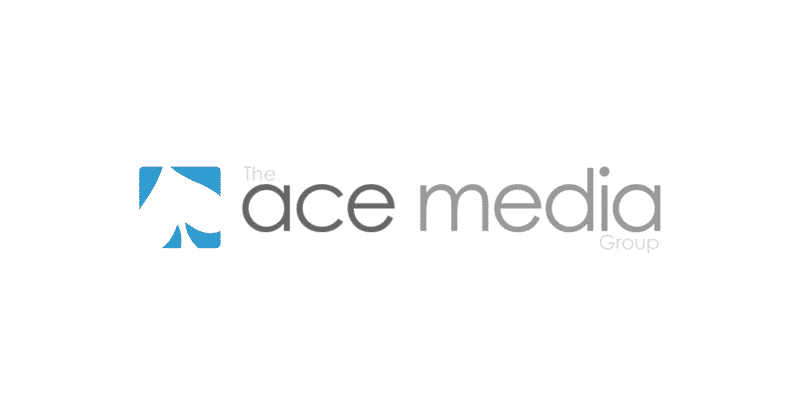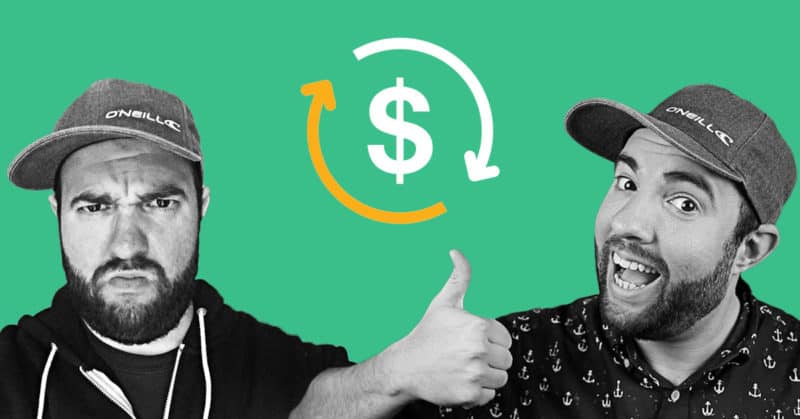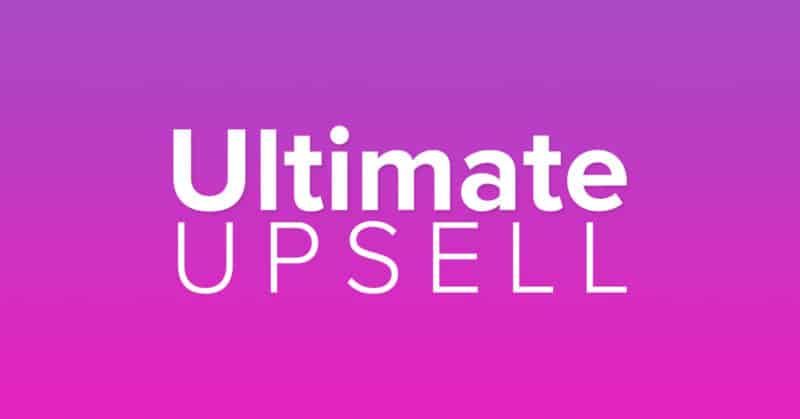The writing’s on the wall. It’s been there for years. Affiliate marketing is dying a slow and painful death. And I won’t be dragged down with it!
Before you freak out and start @ing me on Twitter, Affiliate marketing is dead to me. I’m no longer making it a priority in my business. And I want to share the reasons why.
Am I gonna remove all the affiliate links on my site? No. Am I going to prioritize other revenue streams that actually grow my business and don’t try to fuck me over? Yes.
So here is my latest business manifesto: why I think affiliate marketing is dying and what my strategy will be moving forward.
I Started My Business with 100% Affiliate Marketing
In 2006, when I started my first niche/authority site (Swim University), affiliate marketing was all the rage. That and plastering ads on your site. Funny how things haven’t changed despite evolving from Web1 to Web3.
In the early days, my site made 100% of its revenue with affiliate marketing. And it was slow going. In fact, it took me over 5 years to earn a living ($40,000 a year).
But once I focused on gaining traffic through SEO and signed up with the Amazon Associates program, things took off.
Here’s an annual breakdown of my affiliate revenue:
- 2014: $25,534
- 2015: $80,326
- 2016: $101,117
- 2017: $159,496
- 2018: $246,289
- 2019: $284,009
- 2020: $170,432
- 2021: $152,930
As you can see, affiliate revenue peaked in 2019. Why? That’s when Amazon gave everyone a huge middle finger by changing their commission rates. And it wasn’t the first time they did it.
The First Sign of Death
The first time Amazon fucked me was in 2018. They slashed the commission rates of my coffee website.
When I saw the announcement, I had a panic attack right as I was boarding a plane to Austin. I sold the website shortly after.
It wasn’t my main source of income, but it had me worried about Swim University. Then in 2020, Amazon fucked me again.
This time they did take a chunk of revenue out of Swim University. I lost $176,929, to be exact. But that’s what I get for relying on massive corporations to care about me.
They simply don’t give a flying fuck.
I started diversifying my revenue streams away from Amazon. I focused on selling my own digital products. I started adding links to better, non-Amazon affiliates. I joined another affiliate program with higher commissions.
But then…
The Second Sign of Death
On January 7th, 2022, I got an email from my second largest affiliate program. They completely shut it down. No warning, no heads up.
Great! Now I have a bunch of links on my site pointing to this company and they ain’t paying me shit.
So guess who wins? The company that promised a 10% commission if I switched my Amazon products to them.
Fuck me again.
The Third Sign of Death
Here’s the final nail in the coffin for me. A week before writing this, I got a text from Thomas Frank.
A few years ago I recommended he use ConvertKit because I was using it at the time. Since Thomas’ email list was large, I got a decent payout each month: $350/month.
But then, here’s what he texted me in early 2022.
ConvertKit decided to reduce its 30% recurring affiliate commission to a flat fee of $75. Do I blame them? No. They run a business.
That said, it’s a similar pattern: a company with great affiliate incentive changing the terms after folks have been linking to them and promoting their products for years.
And I wasn’t the only one sad to see them slash the program.
But shortly after the announcement, ConvertKit walk back their decision to slash their recurring affiliate payout.
Turns out they made a mistake. I’m guessing they let down a lot of creators. So they made some tweaks.
But they’re still changing the affiliate commission rates. And this is what you’re up against as an affiliate marketer. You don’t have a seat at the table when a business makes a choice to change what you earn.
In the case of ConvertKit, the people who relied on that income spoke up. Think that’ll happen with Amazon?
Not a fucking snowball’s chance in Jeff Bezo’s sauna.
My Online Business Strategy in 2022 and Beyond
Three of my biggest paying affiliates have fucked me. They either drastically reduced their payouts or shut down their programs entirely.
So how am I supposed to trust another affiliate program?! I can’t and I won’t.
And yet, here I am still making money through affiliate marketing. The truth is, I will always play this game of whack-a-mole with affiliate marketing.
There are still products I like and recommend. If I can make a commission, great. If not, oh well. For the companies that offer commissions, I’ll consider it a bonus.
But focusing on earning revenue and growing my business through affiliate marketing is dead to me. Here is how I’ll grow my business in 2022 and beyond.
1. Creating More of My Own Digital Products
What I love about digital products are the margins. I can sell an online course and earn upwards of a 95% margin. Plus, I happen to be good at making courses.
Before 2018, my digital product sales accounted for only 30% of my overall revenue while the rest came from affiliate marketing. Since the Amazon Associates Apocalypse, digital product sales make up 75% of my revenue. Almost $450,000 last year.
Digital products sales have skyrocketed since I prioritized creating more and focusing on building quality funnels.
There’s still work to do like improving sales pages, adding videos, and updating the course material.
Also, one of the best decisions I made in early 2019 was to use Podia to host and sell all my digital products. It’s the platform I recommend for selling courses and ebooks. And yes, this is an affiliate link!
Everything you need to sell online courses, downloads, and memberships without worrying about the tech. This is what I use to host all my online courses.
2. Replacing Affiliate Products with My Own
In late 2021, I ran an exclusive experiment in Money Lab Pro. I wanted to see if I could create and sell my own physical products. So I white-labeled two hot tub cleaning products, bought a small inventory, and set up a Shopify store.
Once I was ready to launch, I sent an email to roughly 9,000 hot tub owners and sold out my inventory in less than a week.
The experiment was a success! So I bought more inventory and continued to sell. In fact, it’s hard keeping things in stock!
It allowed me to replace two affiliate products with my own. So instead of making a 2.7% commission from Amazon, I’m now making a little over 70% in margin!
I was afraid of selling physical products. I convinced myself to only make digital products. But it turns out, it was a lot easier than I thought.
I grew up in the pool and hot tub industry running brick-and-mortar stores. And that knowledge came flooding back. I feel like it’s my true path to a thriving business.
Honestly, I’m kicking myself for not getting into e-commerce years ago. And in 2022, I’m developing four new products to add to our growing online store.
3. Doubling Down on Email Marketing
“The money is in the list.” Sounds good, but what the fuck does that actually mean?
In early 2021, I decided to finally put all my strengths into email marketing after years of putting it on the back burner.
- I tested multiple lead magnets for all my brands and found out “cheat sheets” worked best for me.
- Set up lead magnet delivery automation that filtered through only the highly engaged to keep my list clean.
- Create onboarding email sequences to nurture leads into customers.
- I cleaned up my lists. Removed inactive and bot subscribers.
- Redesigned and re-wrote all the emails in my evergreen newsletters.
I started to see revenue improve, despite traffic dipping. But it wasn’t until I sent the physical product launch email to my hot tub list that I saw its true power.
Some of my email marketing improvements were covered in this post. But every other improvement and tactic I made is covered in my Email Marketing for Bloggers Course.
Learn how to grow a clean email list of engaged subscribers to earn more revenue. I'll show you how to put your email marketing on autopilot so you can rake in the dough without manually writing emails every week.
I made it my mission to prove that “the money’s in the list” for me. I found out, it takes a lot of work to extract it. But the juice is totally worth the squeeze.
4. Mastering Paid Advertising
Since I don’t want to rely on giant corporations for my business, that goes for Google too. The only reason Amazon pays me a commission is because my sites rank on Google.
Google can just as easily update their algorithm and I can drop in traffic. How do I control this? Paid advertising for my physical products.
What’s nice about selling your own products is it allows you to create a marketing budget. I’ll use that money to pay for the traffic to those products.
The goal of my content is no longer to make 2.7% in commission from Amazon. I have my own products now and I’m making 70% to 95% of every sale.
I know how to create compelling content. Now I just have to make it shorter and boom! Killer ads, better conversions, non-stop money-printing machine.
18 Years of Failing Has Paid Off
I’m not afraid to fail. In fact, I like it!
Money Lab has made me incredibly patient about online business. Instead of getting frustrated, I learn and make changes. Hopefully, I see improvements.
Affiliate marketing has been failing for me. Instead of getting angry and frustrated at something I can’t control, my gut says, “what did we learn?”
I continue to learn I can’t trust the megacorps with the future of my business. I need to make my own products, manage my own leads, and leverage paid advertising to grow.
Maybe affiliate marketing is still a viable revenue source for you. But it’s something worth thinking about. Are you putting all of your eggs in one basket? And who’s holding the basket?
This article has forced me to do something I’ve been meaning to do. My Affiliate Marketing for Bloggers course is now officially Monetizing for Bloggers. It’ll cover affiliate marketing and other ways to monetize your site like selling your own digital and physical products.
Learn the best way to monetize your niche/authority websites for fast revenue growth and sustainability.
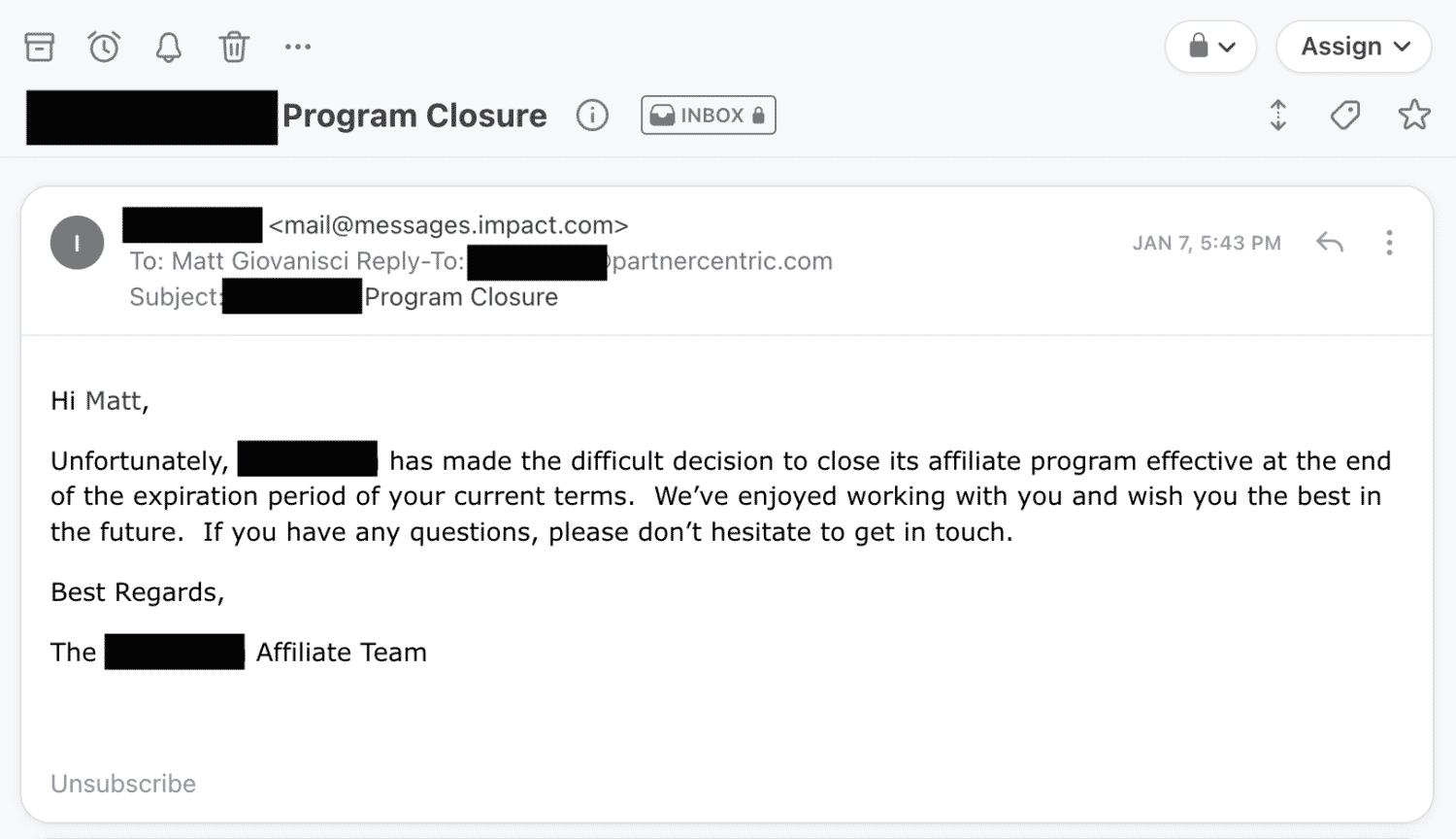
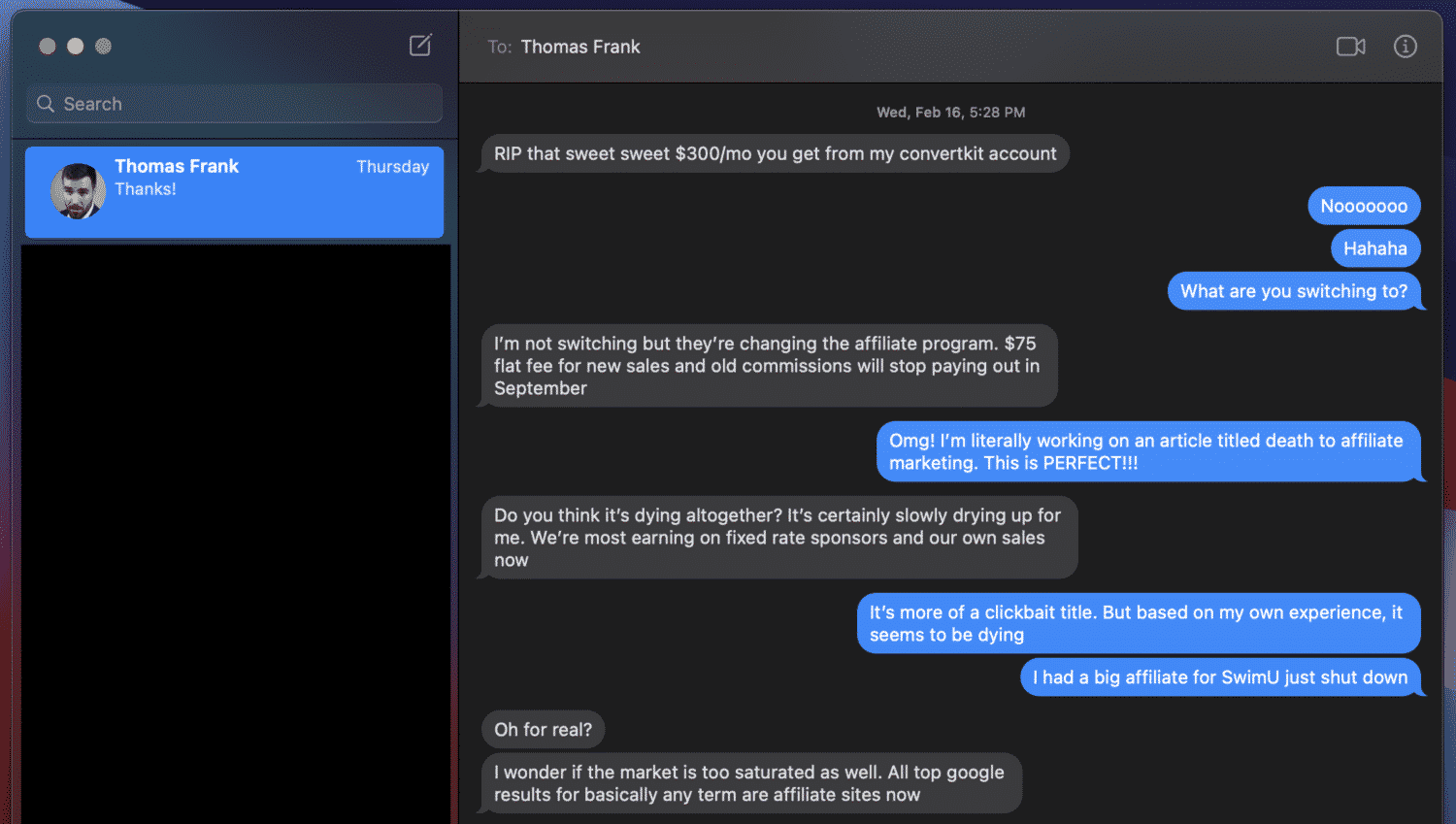
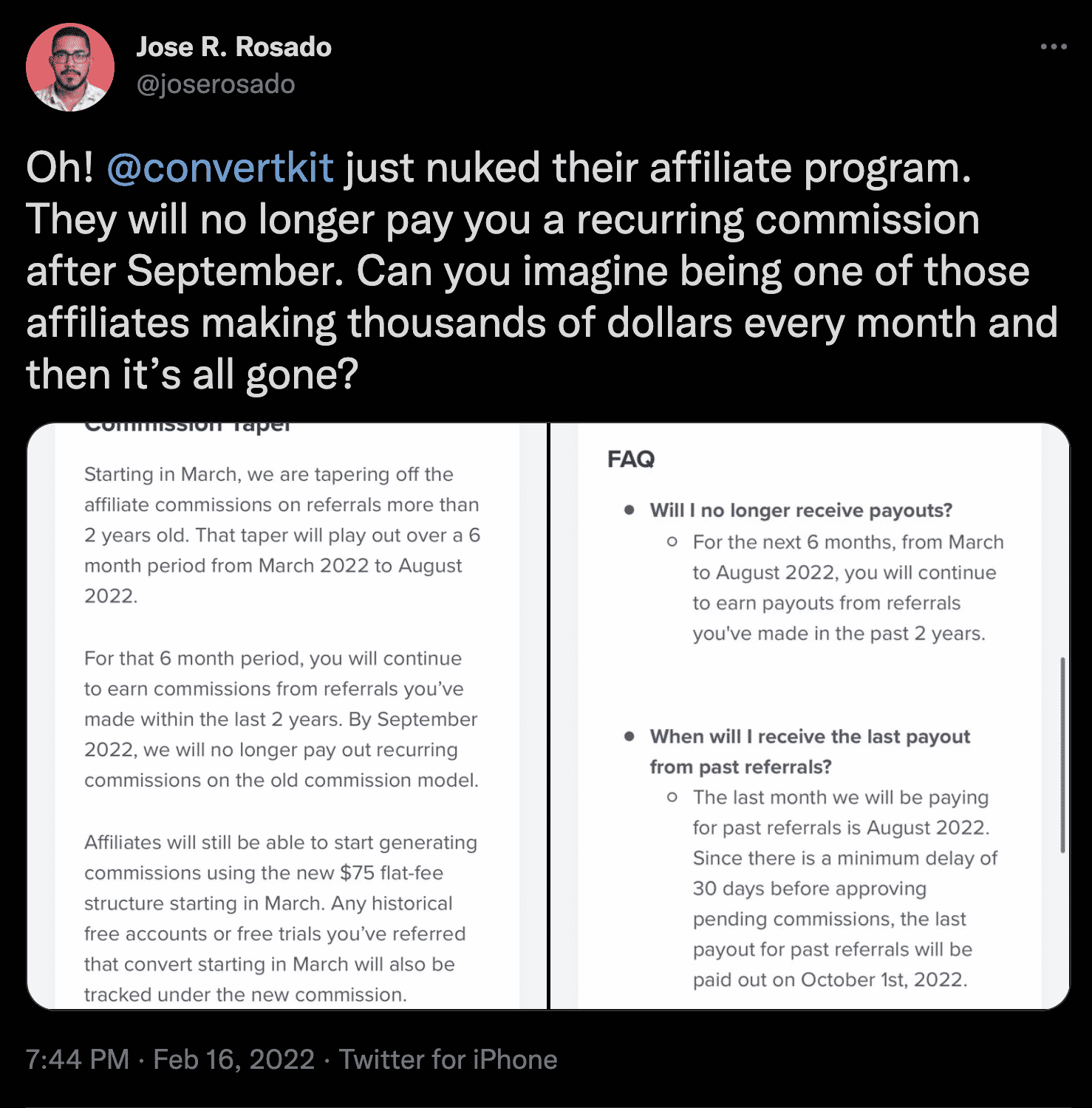
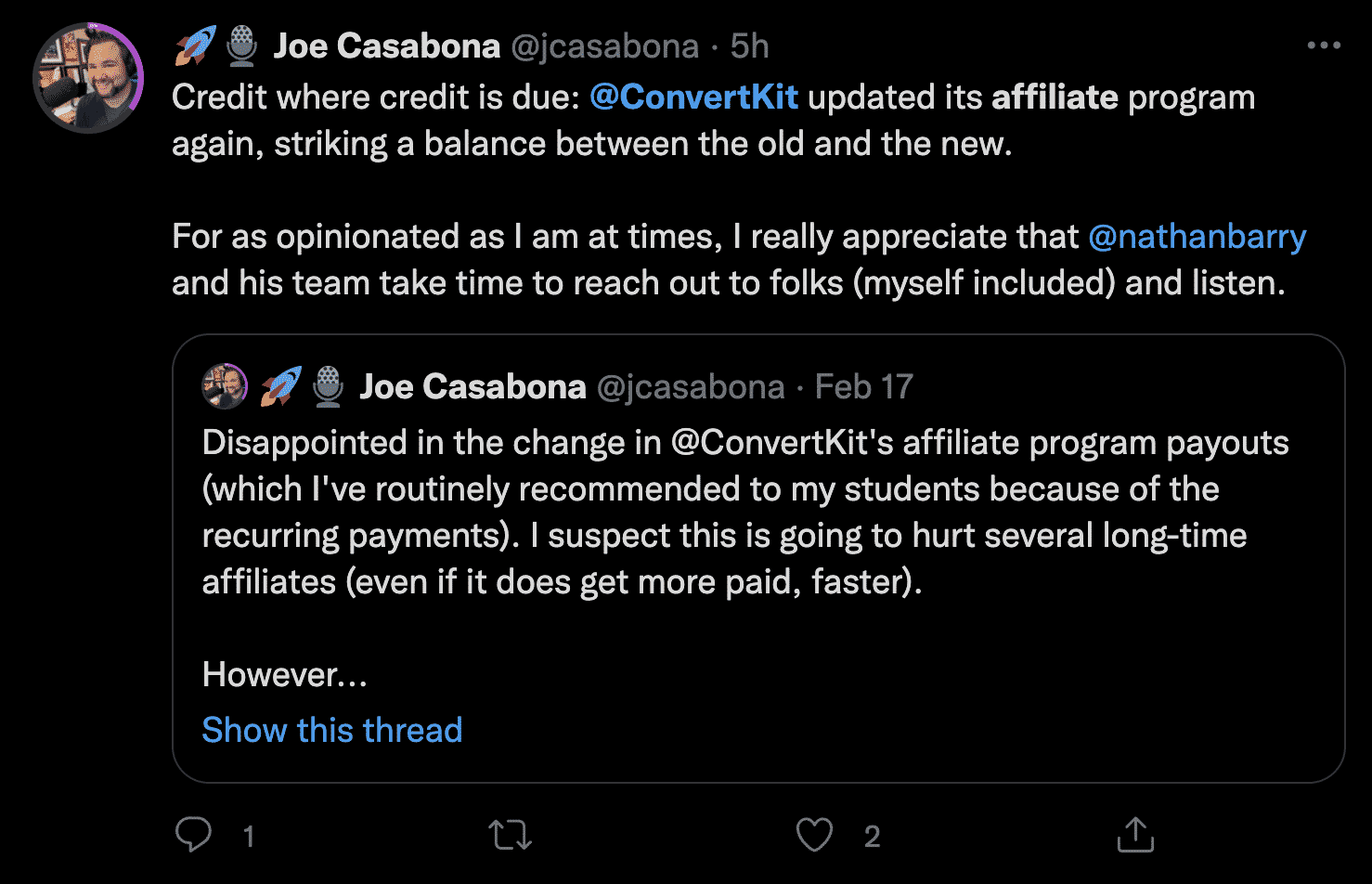
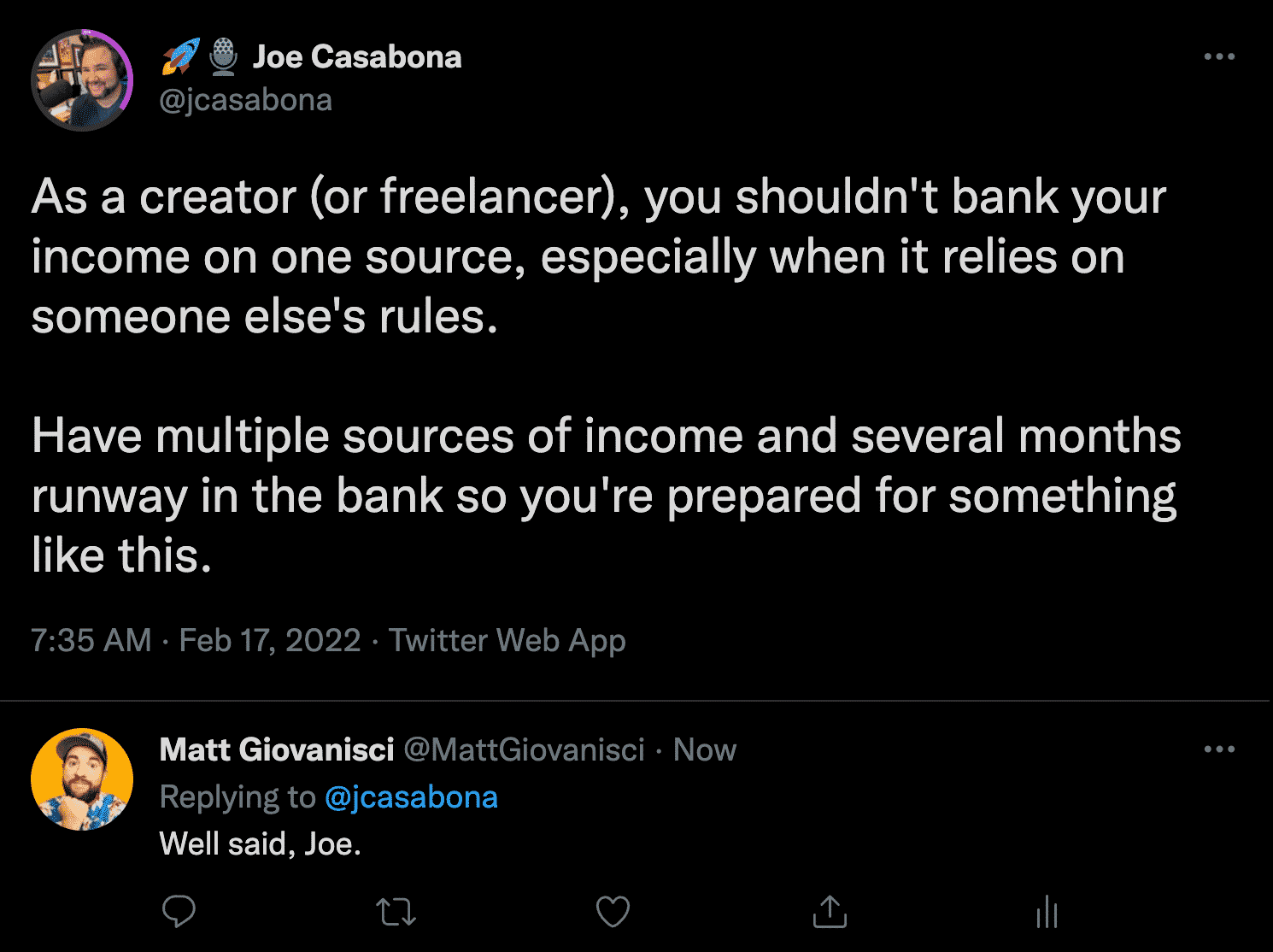
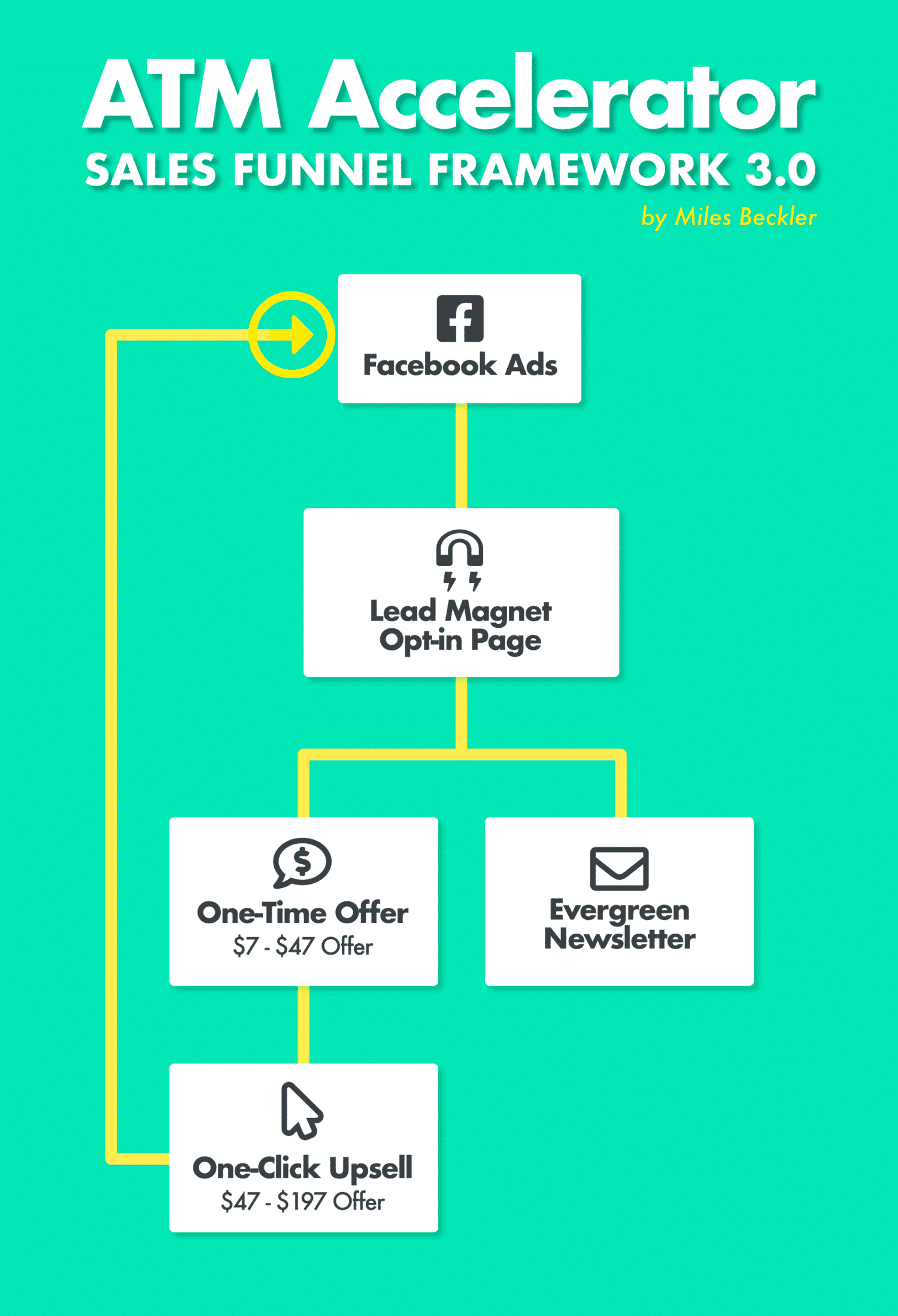
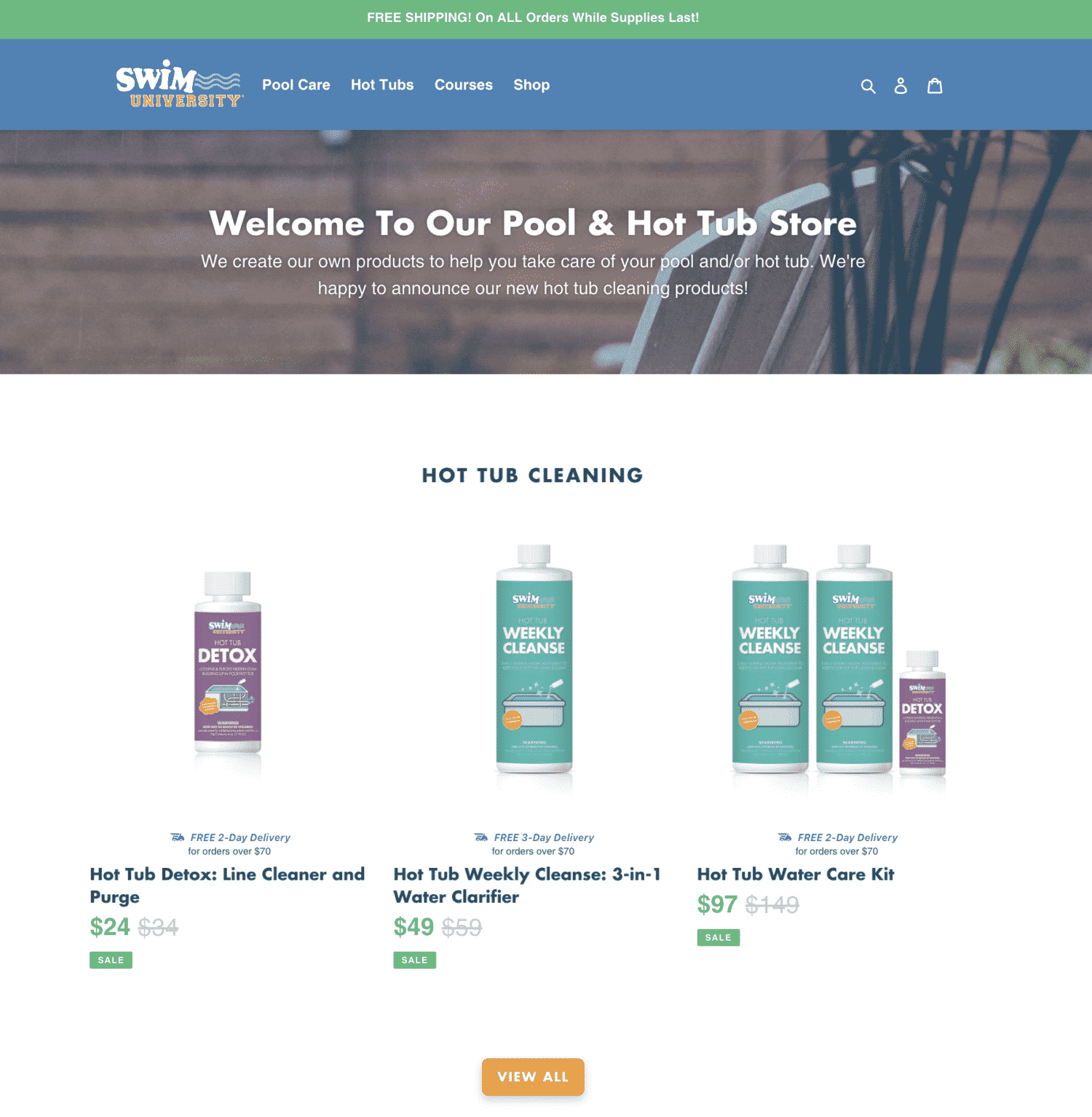
![Email Marketing For Bloggers [COURSE]](https://www.moneylab.co/wp-content/uploads/Email-Marketing-For-Bloggers.png)
![Monetizing For Bloggers: Make Serious Money With Your Site [COURSE]](https://www.moneylab.co/wp-content/uploads/Monetizing-For-Bloggers-Podia.png)
